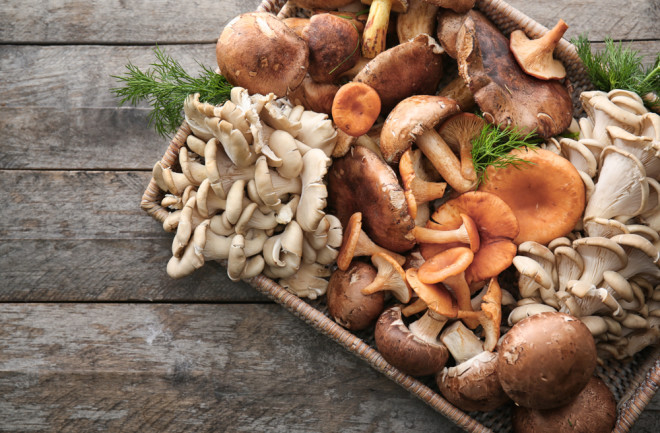The seed for Eben Bayer’s big idea — an idea that would eventually put him on the Forbes “30 Under 30 list” — was planted when he was just a kid growing up on a small farm in South Royalton, Vermont.
Every spring, he would shovel wood chips onto the conveyor belt of a 20-foot evaporator that turned sap into maple syrup. But sometimes large, white, damp clumps would turn up in the wood chips and jam up the operation. The clumps were mycelium, the root-like threads of fungi that grow underground and give rise to mushrooms.
At the time, mycelium was an annoyance. But years later, Bayer thought back to the mycelium in the wood chip pile while trying to come up with an idea for an “inventor’s studio” class at Rensselaer Polytechnic Institute.
“I was like, ‘Hey, that’s kind of unique. Maybe I could use that,’” he said.
It turned out that mycelium was even more useful than Bayer could have imagined. While still in college, Bayer and a classmate founded Ecovative, a company that creates packaging materials, foam board, leather, and even bacon from mycelium. More than 15 years later, Ecovative is still going strong.
Humans have eaten fungi since prehistoric times, and today, people like Bayer are still finding new uses for them. Here are three unique ways that humans use fungi and mushrooms.
1. Mushrooms in Medicine
Ötzi the Iceman, one of the oldest mummies ever discovered, met an untimely death in the German Alps before being preserved by glacial ice for 5,000 years. When archaeologists inspected his belongings, they found he was carrying two types of mushrooms with him.
The first was tinder polypores, which he likely used to carry hot coals from one campsite to the next. The second type, tucked away in a pouch around his neck, was birch polypores. Researchers have speculated that Ötzi ate these mushrooms in an effort to poison and expel the intestinal parasites that plagued him.
Ötzi might be the oldest example of a human using fungi as medicine, but he certainly was not the last. Alexander Fleming extracted the revolutionary antibiotic penicillin from the fungus Penicillium rubens, a discovery that later earned him the Nobel Prize in Medicine.
Fungi continue to be useful organisms for biomedical research today. Researchers recently used another fungus, Aspergillus oryzae, to produce monoclonal antibodies to treat rheumatoid arthritis.
Read More: 5 Inventions That Were Discovered by Accident
2. Psychoactive Properties
In recent years, psilocybin mushrooms have made headlines because of new research into their use as a catalyst for psychotherapy and addiction treatment.
A second, lesser-known psychoactive mushroom is Amanita muscaria, also known as fly agaric. These red, white-dotted mushrooms originated in Siberia but grow worldwide, including in North America. For hundreds of years, Siberian shamans used the mushroom to induce a trance-like state. Unfortunately, the details of these practices were lost to modernization.
The hype around psilocybin has spurred renewed interest in Amanita muscaria. The mushrooms, eaten alone, contain a dangerous amount of the neurotoxin Ibotenic acid. However, they also contain a compound called muscimol, which acts on the brain through a similar pathway to alcohol. Though the effects of muscimol are not well studied, one user who posted his experience to YouTube (below) reported intense euphoria. Today, companies have begun to manufacture and sell muscimol-containing gummies.
Read More: Psychedelics Could Be the Future of Psychotherapy
3. Cleaning Up the Environment
Through extensive research, scientists have identified fungi capable of breaking down common long-lived plastics like polyethylene (plastic bags), polystyrene (Styrofoam) and polypropylene (synthetic clothing). Certain fungi have also shown promise in removing other pollutants, like PCBs and heavy metals, from soil and water.
However, these insights have not yet been applied on a large scale. One reason may be that the process tends to take a long time. As such, policymakers often opt for quick, though less permanent, solutions. For now, fungi’s potential as a response to environmental degradation is mostly theoretical. But, one day, these organisms may play an essential role in rejuvenating polluted places.

